How To Choose the Best Materials for your Four-Season Sunroom
You’ve decided to build a beautiful four-season sunroom for your Lafayette home. It’s a wonderful choice! You’ll get to enjoy the benefits of more natural daylight and pleasant outdoor views, even during cold or inclement weather. But before your design and build project begins, it’s important to choose the right materials that will work best for this unique type of space.
This article explores the best flooring, window, and heating options for your dream all-year-round sunroom so it remains bright, cozy, and energy-efficient long into the future.
Flooring Options for Your Four-Season Sunroom
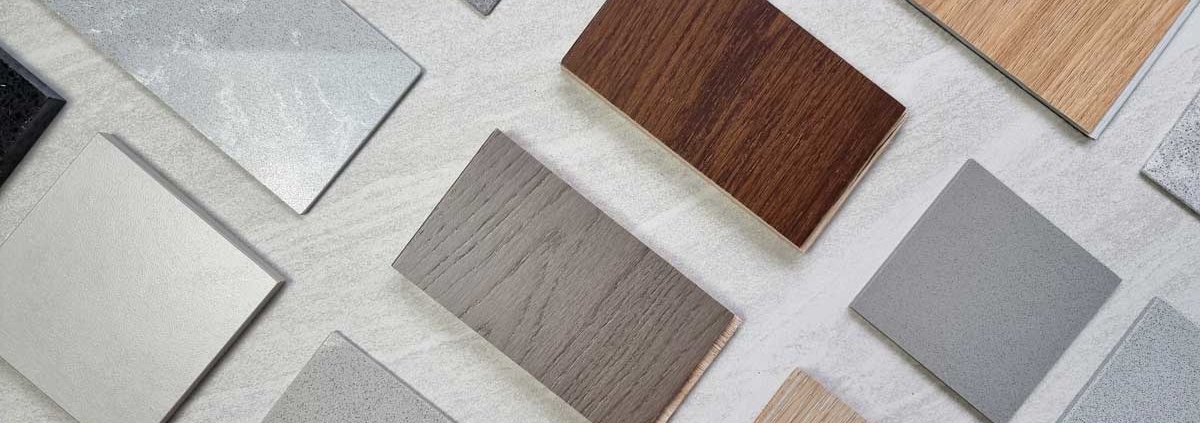
With many flooring options available, knowing which material to choose can be tricky. Several factors might influence your selection, and these include your overall sunroom design, lifestyle, location, and any accessibility requirements you may have.
Here are some popular sunroom flooring options:
Ceramic, Porcelain, and Stone Tile: Tile flooring is a great option for a sunroom as it is moisture-resistant and easy to clean. Stone tiles are durable and provide a natural look, while ceramic and porcelain tiles offer a wide range of styles and colors from which to choose.
Carpet: Carpet is a good choice for a sunroom if you want a soft and comfortable surface to walk on. However, choose a high-quality carpet that can withstand sunlight and moisture.
Concrete: Concrete is a durable and low-maintenance option for a sunroom. It can be stained or painted to match the overall interior decor. It sounds a bit cold, but it can look amazing.
Laminate: Laminate flooring is a budget-friendly option that is easy to install and maintain. It can look nice, but unfortunately, it can also expand or contract with temperature and air humidity changes.
Luxury Vinyl: Luxury vinyl flooring – sometimes known as Luxury Vinyl Plank (LVP) – is highly durable, waterproof, easy to clean, and available in a variety of styles and colors. One long-term drawback is that it can fade slightly in direct sunlight, but this takes a while.
Solid Hardwood: Made from wood such as oak, maple, or cherry, solid hardwood flooring is an excellent choice for floors elsewhere in the home but not for your sunroom. It’s vulnerable to moisture and temperature changes like with laminate which can cause it to warp or shrink over time.
Engineered Hardwood: Engineered hardwood flooring is a better option for a sunroom as it is more resistant to moisture and temperature changes. It’s also easy to install and maintain and looks great.
Choosing the Right Windows for Your Four-Season Sunroom
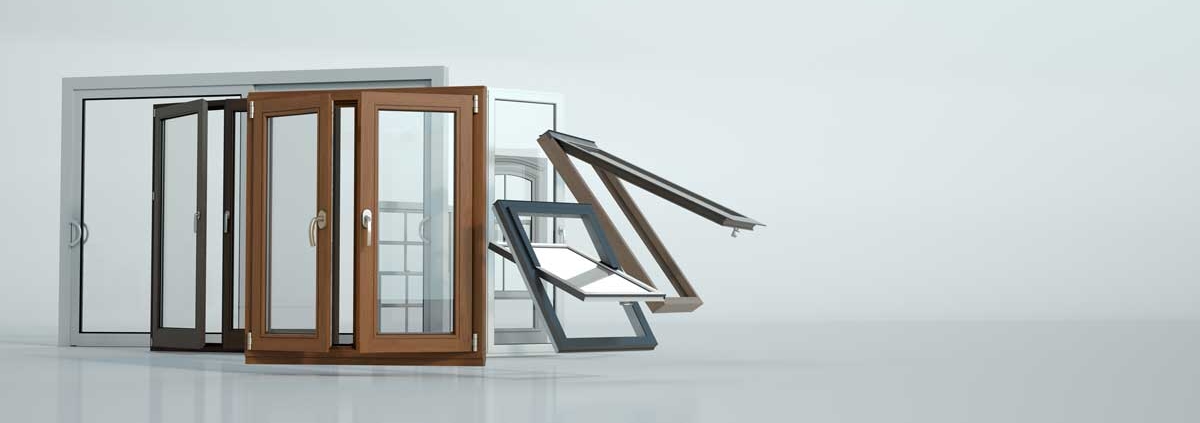
Choosing the right windows for your seasonal sunroom is crucial for maximizing the room’s use and comfort. The right windows will provide optimal insulation, protection from the elements, and an unobstructed view of the outside, creating a cozy and inviting space for multi-seasonal use.
Here are some important things to consider:
Sunroom window types
Several different window types are suitable for sunrooms. These include:
Casement and Awning Windows: Casement windows have a crank handle that opens the window to the left or right, while awning windows are hinged at the top and open upward. Both windows open outward, providing excellent ventilation and natural light.
Double-Hung Windows: Another popular choice for four-season sunrooms are double-hung windows which are simple to operate and provide a traditional look. They feature two sashes that can be opened from the top or bottom, allowing for good ventilation and easy cleaning.
Sliding Windows: As the name suggests, sliding windows slide left or right. They come in various styles and sizes, including floor-to-ceiling formats. Sliding windows are an excellent option for sunrooms facing a deck or patio, providing an unobstructed view and easy outdoor access.
Picture or Bay Windows: Both these types of windows are ideal for sunrooms. Picture windows consist of one large pane of glass that almost looks like it’s not even there (if kept clean). They provide excellent views and natural light. Bay windows are popular as they project out from the wall and create a cozy window seat or an area for plants.
Fixed Windows: A fixed window is unopenable but provides several benefits to an interior space, including a sunroom. They welcome natural light without compromising insulation or airtightness and act in a supporting role to the above window styles.
Sunroom Glass Types
Now let’s have a look at the two most efficient window glass types:
Double-glazed windows have two panes of glass with a gap between them, often filled with air or an insulating gas such as argon. This design provides improved insulation, making them a better option for sunrooms than single-glazed windows. As a result, they are more energy-efficient, reducing heat loss in the winter and heat gain in the summer.
Triple-glazed windows take insulation to the next level, with three panes of glass and two air spaces. This results in even better insulation and soundproofing, making them the most energy-efficient option for sunrooms. As you might expect, they are also the most expensive option.
Window Frame Materials
And finally, the window frames:
Wooden window frames are a traditional choice for sunrooms and provide a classic, warm appearance. They are often made from solid wood or engineered wood and can be stained or painted to match the aesthetic of the interior.
However, wooden frames require regular maintenance, such as sanding, staining, and painting, to keep them looking good and functioning well. They are also more susceptible to warping and swelling and can be less energy-efficient when compared to other frame materials.
Fiberglass frames offer a combination of durability, energy efficiency, and a modern look. They are made from a composite material that’s resistant to moisture, rot, and insect damage, and they won’t warp or swell like wooden frames.
Another benefit is their high thermal resistance, which, as we’ve seen before, helps to keep your sunroom cool in the summer and warm in the winter. Fiberglass frames are available in various colors and finishes to match the interior style.
Vinyl frames are also popular for sunrooms due to their low maintenance, durability, and energy efficiency. They are made from PVC, a robust and weather-resistant material that doesn’t require painting or staining.
They also have excellent thermal resistance qualities, which help to keep your sunroom comfortable through every season. Vinyl frames are available in a range of colors and can often be more affordable than other frame materials.
Best Ways to Heat Your Sunroom in the Colder Months
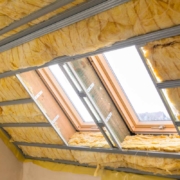
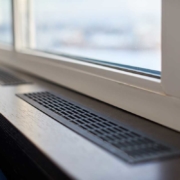
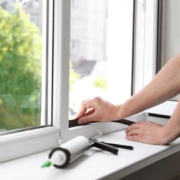
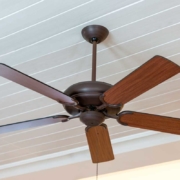
Heating your four-season sunroom during the colder months here in Indiana is vital for maintaining a comfortable indoor environment and extending its use throughout the year. Yet you want to avoid paying higher energy bills due to heat loss and inefficient heating systems.
Here are some key considerations to bear in mind:
Insulate the Walls and Ceiling
One of the most critical steps in heating a sunroom is ensuring it’s well insulated. Insulating the walls and ceiling prevents heat from escaping during colder months. You can achieve this by adding fiberglass, spray foam, or blown-in insulation.
Baseboard Heaters
Baseboard heaters are heating systems that provide warmth to a room by heating a metal element within the modular unit and then circulating hot air through the sunroom. Such heaters are easy to install along baseboards and generally operate in complete silence. There are a few different types to consider, including electric, hydronic, and fluid-based systems.
Add Weather Stripping Around Windows
Another effective way to maintain heat in a sunroom is by adding weather stripping around windows. This prevents drafts and keeps the heat inside the room. By reducing the amount of air that leaks in and out of the sunroom, you’ll save energy and increase the efficiency of your heating system.
Install a Separate HVAC System
For larger sunrooms, installing a separate HVAC system may be necessary. This allows for individual climate control in the sunroom and will provide more consistent heating and energy efficiency.
That said, it might well be possible to tie into an existing home-wide system or to install what’s known as a mini split option which can be a great solution for sunrooms and older properties. This is type of air conditioning system that allows for independent temperature control in different rooms via a connection with a separate outdoor unit.
Add a Ceiling Fan
Ceiling fans can also be useful in heating a sunroom. By circulating the air in the room, a ceiling fan can help distribute heat more evenly and reduce the need for additional heating.
Your trusted remodeling team will advise you on the best options for heating your particular sunroom in the fall and winter.
Work with a Design Build Firm Like Riverside to Create Your Perfect Four-Season Sunroom
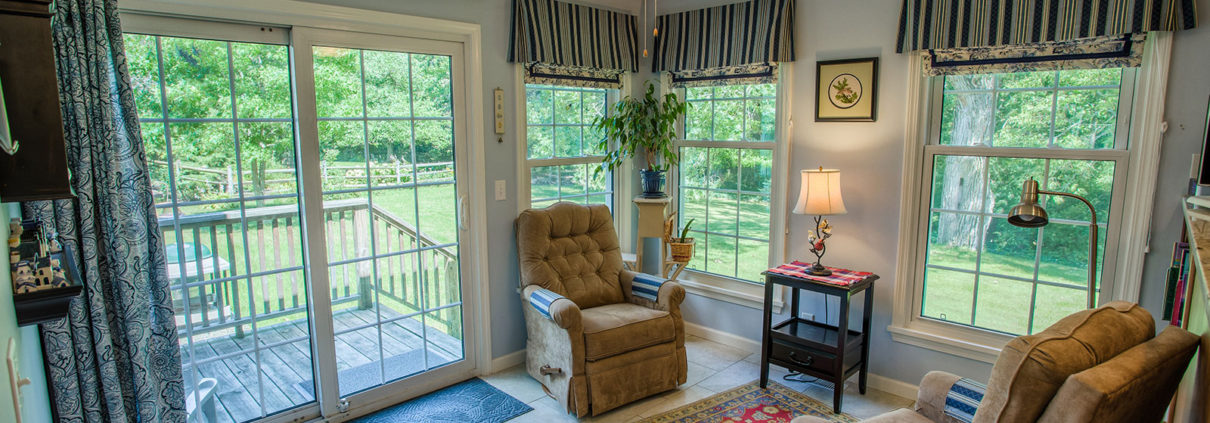
Riverside Construction, founded in 2008, is the go-to professional design-build team that has earned the respect and confidence of discerning homeowners in the Lafayette and West Lafayette areas.
With an award-winning team of highly skilled and experienced professionals in a range of fields, we excel at listening to client ideas and then translating those dreams into reality. We can help you decide on a direction, provide guidance on remodeling issues, and be with you every step of the way to ensure your dream home is achieved.
Contact us now to schedule an initial conversation about your upcoming remodel. We’ll happily answer your questions, listen to your ideas, soothe your worries, and work with you to finalize your plans.
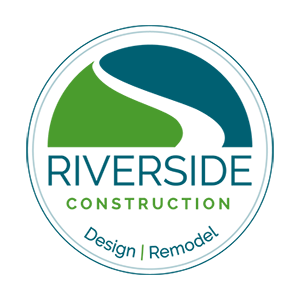
 The most straightforward way to finance your home remodel is to pay using cash you have saved. Paying in cash ensures you can actually afford the improvements you’re making while at the same time avoiding getting into debt.
The most straightforward way to finance your home remodel is to pay using cash you have saved. Paying in cash ensures you can actually afford the improvements you’re making while at the same time avoiding getting into debt.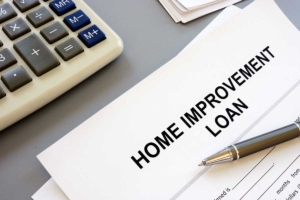 Home improvement loans have a fixed interest rate based mainly on your credit score. These loans are unsecured and don’t use your home as collateral.
Home improvement loans have a fixed interest rate based mainly on your credit score. These loans are unsecured and don’t use your home as collateral. A home equity loan is a fixed-term loan granted to a homeowner based on the equity in their home. Often referred to as second mortgages, home equity loans arrive as a lump sum which is then immediately paid back in fixed monthly payments.
A home equity loan is a fixed-term loan granted to a homeowner based on the equity in their home. Often referred to as second mortgages, home equity loans arrive as a lump sum which is then immediately paid back in fixed monthly payments. A Home Equity Line of Credit (HELOC) is similar to a home equity loan but has some key differences. It, too, comes with a fixed interest rate and is delivered in a chosen lump sum. The HELOC is also secured against the equity of your Lafayette home.
A Home Equity Line of Credit (HELOC) is similar to a home equity loan but has some key differences. It, too, comes with a fixed interest rate and is delivered in a chosen lump sum. The HELOC is also secured against the equity of your Lafayette home. A cash-out refinance is when you turn equity into cash through refinancing your mortgage. In other words, you can replace your old mortgage with a new one and have the difference paid to you in cash. You can then use these extra dollars to finance a home remodel.
A cash-out refinance is when you turn equity into cash through refinancing your mortgage. In other words, you can replace your old mortgage with a new one and have the difference paid to you in cash. You can then use these extra dollars to finance a home remodel. For smaller home improvement projects, credit cards are a potential financing option. You can even pay interest-free if using a new credit card with an introductory 0% interest rate.
For smaller home improvement projects, credit cards are a potential financing option. You can even pay interest-free if using a new credit card with an introductory 0% interest rate. A low-cost option for a home improvement project is a government-backed renovation loan. However, such loans are usually only available to certain people. Qualifiers include income level, age, property type, property location, and whether you have a disability.
A low-cost option for a home improvement project is a government-backed renovation loan. However, such loans are usually only available to certain people. Qualifiers include income level, age, property type, property location, and whether you have a disability.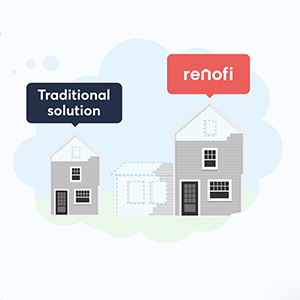 Finally, there’s a specialist payment option specifically for homeowners carrying out a home remodel. It’s called a RenoFi and it’s similar to a traditional home equity loan or home equity line of credit (HELOC) but with some important differences.
Finally, there’s a specialist payment option specifically for homeowners carrying out a home remodel. It’s called a RenoFi and it’s similar to a traditional home equity loan or home equity line of credit (HELOC) but with some important differences.

